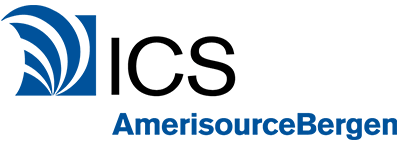
Q: What are the key challenges facing the pharmaceutical industry when it comes to implementing serialization regulations?
From a technological standpoint, the industry must equip itself with sophisticated systems capable of capturing and meticulously tracking serialized information. Once these systems are in place, the operational hurdles lie in the meticulous collection of this data at various points, whether it be at the manufacturing plant, within the wholesale and distribution channels, or at the dispensary level.
An intricate web of processes demands either updates or entirely new implementations, necessitating comprehensive training and education for all stakeholders. As customers may seek clarity on potential gaps in serialized information, it is paramount that master data encompassing information on suppliers, products, and customers is effectively collected to ensure the success of serialization. Furthermore, industry-wide adoption of standards for data transmission and sharing of master data is of utmost importance.
Q: Why is it important that the pharmaceutical industry invests in serialization solutions and technologies?
Regulatory mandates dictate the necessity of interoperable systems, rendering it unfeasible to operate in the pharmaceutical sector without them. The imperative of implementing interoperable systems extends across the entire industry spectrum.
While major players have already established such systems over the years, smaller distributors and dispensers, by contrast, may still lack these crucial systems. For some, the impact on their operating income is substantial, necessitating significant investments to support serialization. This widespread investment is required to serialize products and guarantee the integrity of the manufacturing process. At the dispenser level, ensuring the availability of equipment for scanning serial numbers and the implementation of comprehensive data collection systems are imperative to fulfill regulatory requirements.
Q: How can serialization help in combating the rise of counterfeit drugs, increasing patient safety and enhancing supply chain security?
In the contemporary landscape, each drug possesses unique characteristics, rendering replication a formidable challenge. Counterfeit expertise has evolved significantly over the years, introducing heightened complexities. The ability to trace drugs throughout the supply chain provides a robust mechanism to identify potential points of entry for counterfeit drugs into the market. For instance, in cases where counterfeit drugs infiltrate the supply chain, beginning with the manufacturer, then moving through wholesalers and specialty distributors, the identification of recurring serial numbers aids in tracking the origin of these illicit products.
Serial numbers should be generated in a non-sequential manner, employing randomized alphanumeric sequences of up to 20 characters to deter unauthorized replication effectively. The overarching goal remains the enhancement of patient safety, with the concept of authorized trading partners emphasizing the importance of conducting business exclusively with authorized entities.
Q: How vital is that serialization systems keep up with the evolving regulatory landscape and industry guidelines?
Continual alignment with the evolving regulatory landscape and industry guidelines is of paramount importance. While the foundational framework was established a decade ago, ongoing guidance publications have aimed to enhance the overall efficiency of the serialization process. Notably, the United States differs from certain European models in that each partner maintains its own data system. While these systems exhibit similarities, inherent differences persist.
Consequently, the industry must explore avenues to achieve greater standardization. For instance, in the realm of file transactions, adherence to the GS1 Electronic Product Code Information Services (EPCIS), currently at version 1.2 with version 1.3 on the horizon, exemplifies the need for industry-wide standardization. It is essential to assess our industry’s evolutionary trajectory. Simultaneously, the FDA publishes its own guidelines, while various stakeholders set standards. Legislative introductions may not always possess a technical orientation, and thus, the guidance, while outlining overarching objectives, may lack specific insights into the technological and systemic aspects of implementation.

Q: How can serialization help manufacturers maximise return on investments?
The initial years entail substantial investments encompassing infrastructure, systems, and comprehensive training initiatives. A significant volume of labor and resources are devoted to these endeavors. Notably, the FDA has introduced new guidance that incorporates a stabilization period from November 2023 to November 2024, aimed at ensuring the industry’s readiness for the new serialization requirements.
Throughout this stabilization phase, the focus shifts toward identifying value beyond mere compliance and exploring avenues to derive substantial benefits. Comprehensive visibility, extending down to the serial number level through interoperable systems, offers the potential to integrate various components effectively. However, it’s important to note that this model does not provide manufacturers with end-to-end visibility; instead, it operates on a “one up, one down” model.
As the industry evolves, additional opportunities to realize return on investment may emerge. Additionally, addressing the issue of counterfeit drugs, which carries significant costs for pharmaceutical manufacturers and potential harm for patients, underscores the urgency of serialization efforts.
Q: What role do third-party logistic providers play in the future of the pharma industry?
Third-party logistics providers (3PLs) occupy a pivotal role in supporting pharmaceutical manufacturers. These entities must lead the charge by establishing the necessary systems to facilitate the seamless transmission of critical data.
Beyond system implementation, standardization efforts and adherence to appropriate guidance are essential components of their role. Early adoption and the provision of high-quality data into the supply chain benefit all downstream partners, allowing them to embark on their serialization journey with a solid foundation.
While regulatory requirements are set to take effect in November 2023, many within the industry have been proactively preparing for years, accumulating expertise and knowledge in this domain. Furthermore, fostering collaboration within the industry is crucial. Despite being competitors, those engaged in serialization often collaborate and share invaluable lessons learned. A connected environment, where trading partners exchange data, underscores the importance of collaborative efforts in navigating this evolving landscape.
To find out how to meet the latest US serialization requirements download the whitepaper below.



